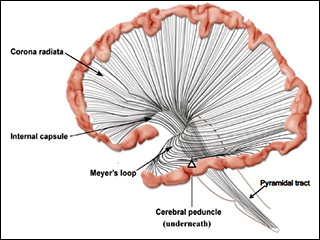
Drawing of the left hemisphere of the human brain together with the brainstem, dissected to reveal the course of axons that descend to the brainstem and spinal cord. (Courtesy of MIT Press. Used with permission. Figure 22.8 from Schneider, G. E. Brain Structure and its Origins: In the Development and in Evolution of Behavior and the Mind. MIT Press, 2014.)
Instructor(s)
Prof. Gerald E. Schneider
MIT Course Number
9.14
As Taught In
Spring 2014
Level
Undergraduate
Course Description
Course Features
- Audio lectures
- Captions/transcript
- Lecture notes
- Assignments: problem sets (no solutions)
- Exams and solutions
Educator Features
Course Description
This course provides an outline of vertebrate functional neuroanatomy, aided by studies of comparative neuroanatomy and evolution, and by studies of brain development. Topics include early steps to a central nervous system, basic patterns of brain and spinal cord connections, regional development and differentiation, regeneration, motor and sensory pathways and structures, systems underlying motivations, innate action patterns, formation of habits, and various cognitive functions. In addition, lab techniques are reviewed and students perform brain dissections.
Other Versions
Other OCW Versions
Archived versions: ![]()


